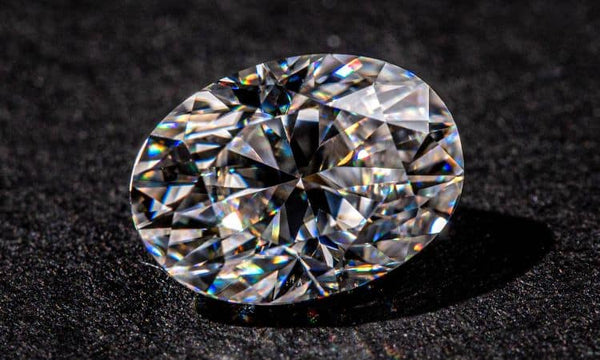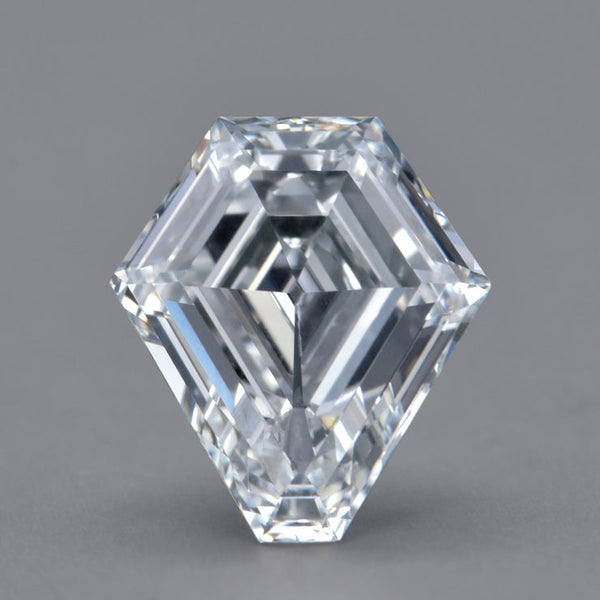Understanding Diamond Cut: The Key to Sparkle and Brilliance

Among the renowned Four C’s of diamonds—carat, clarity, colour, and cut—the cut is widely recognised as the most critical factor influencing a diamond’s overall visual appeal. However, what exactly does diamond cut mean, and why does it matter so much? This guide breaks down the concept of cut, how it is evaluated and why it plays a central role in the beauty and value of a diamond.
What Is Diamond Cut?
In the diamond industry, the term cut can have two different meanings. First, it refers to the specific shape or style of a polished diamond, such as the round brilliant, princess, or marquise cut. Each shape has its own unique facet pattern and visual character, shaping how the diamond appears when viewed.
More importantly, within the context of the Four C’s, cut refers to the quality of the diamond’s proportions, symmetry, and polish; i.e. the precise way a diamond’s facets are crafted to interact with light. This quality affects how well the diamond reflects and refracts light, producing its signature brilliance, fire and scintillation. The cut essentially determines how dazzling and lively a diamond looks to the naked eye.

Distinguishing Shape from Cut Quality
While a diamond’s shape defines its external form, cut quality measures the craftsmanship and precision with which the diamond’s facets are fashioned. For example, two round-cut diamonds may differ significantly in cut quality: one may have well-balanced proportions and excellent symmetry, while the other might have uneven facets and poor polish.
Diamond grading laboratories, such as the Gemological Institute of America (GIA), assign official cut grades only to round brilliant diamonds. Other shapes currently do not receive standardised cut grades, though their cut quality is still an important consideration when selecting a diamond.
Why Cut Quality Matters
Cut quality directly impacts a diamond’s brilliance and sparkle. Even a diamond with excellent clarity and colour can appear dull or lifeless if the cut is poor. The role of the diamond cutter is crucial: their skilful work transforms a rough stone into a polished gem that maximises light performance.
During the cutting process, the cutter must balance two main priorities. On one hand, they strive to enhance the diamond’s optical beauty by optimising proportions and facet arrangements. On the other hand, they aim to preserve as much of the original carat weight as possible, since a larger diamond generally holds greater value. These goals can sometimes conflict, as retaining weight may mean compromising ideal proportions, leading to a diamond that looks smaller or less vibrant than its weight might suggest.
Poorly cut diamonds can suffer from various issues. For instance, an excessively deep pavilion may cause light to escape from the bottom of the stone, resulting in a dark or “windowed” appearance. Conversely, a shallow pavilion can create a “fish eye” effect, where the girdle becomes visible through the diamond’s table. These visual flaws diminish the diamond’s brilliance and overall appeal.

Image credit: diamondguidance.com
How Cut Quality Is Graded
The GIA evaluates round brilliant diamonds based on several factors that together reflect the diamond’s light performance and craftsmanship. These include brightness (the overall return of white light), fire (the dispersion of light into spectral colours), scintillation (the sparkle caused by reflections when the diamond moves), weight ratio (how the diamond’s proportions relate to its carat weight), durability (structural integrity), polish (smoothness of the surface) and symmetry (alignment and shape of facets).
The final cut grade assigned by the GIA ranges from Excellent to Poor. This grade is largely determined by the lowest ratings across the primary components like brightness and fire. Polish and symmetry are assessed separately but influence the overall cut quality. For example, a diamond may have very good polish and symmetry but still receive an excellent cut grade if its brightness and scintillation are outstanding.
Visual Impact of Cut Grades
Diamonds graded as Excellent or Very Good cut typically demonstrate the best light performance, appearing lively, brilliant, and fiery. Those graded Good can still offer attractive sparkle but may show slight compromises in proportions or finish.
Diamonds with Fair or Poor cut grades often display noticeable shortcomings such as light leakage, dullness, or unattractive reflections. Due to these limitations, we at Layla Kaisi Collection do not work with diamonds graded Good, Fair, or Poor, as they fail to meet the standard of beauty and quality our clients expect.

Using Your GIA Cut Report
When you receive a GIA Diamond Grading Report, it includes a detailed analysis of the diamond’s cut, accompanied by diagrams illustrating its proportions and facet arrangement. This report is an essential tool for understanding how well the diamond has been cut beyond just its carat weight or clarity grade. It helps you assess the stone’s potential brilliance and guides you toward a truly stunning diamond.
Final Thoughts
While carat weight, clarity, and colour are all important considerations, cut quality is the true determinant of a diamond’s sparkle and visual appeal. Selecting a diamond with an excellent cut ensures that your stone will dazzle and delight for a lifetime.
At Layla Kaisi Collection, we carefully source diamonds with exceptional cut quality, balancing brilliance, size, and value to bring out the best in every bespoke design. Our expertise helps you find a diamond that not only meets but exceeds your expectations in beauty and craftsmanship.
Begin your custom or bespoke jewellery journey with LKC today. To deepen your understanding of diamond quality, explore our detailed guides on the Four C’s:
-
Understanding Diamond Clarity: Evaluating a Diamond’s Natural Characteristics
-
Understanding Diamond Carat: What It Really Means
-
Understanding Diamond Colour: The Importance of Purity and Hue



